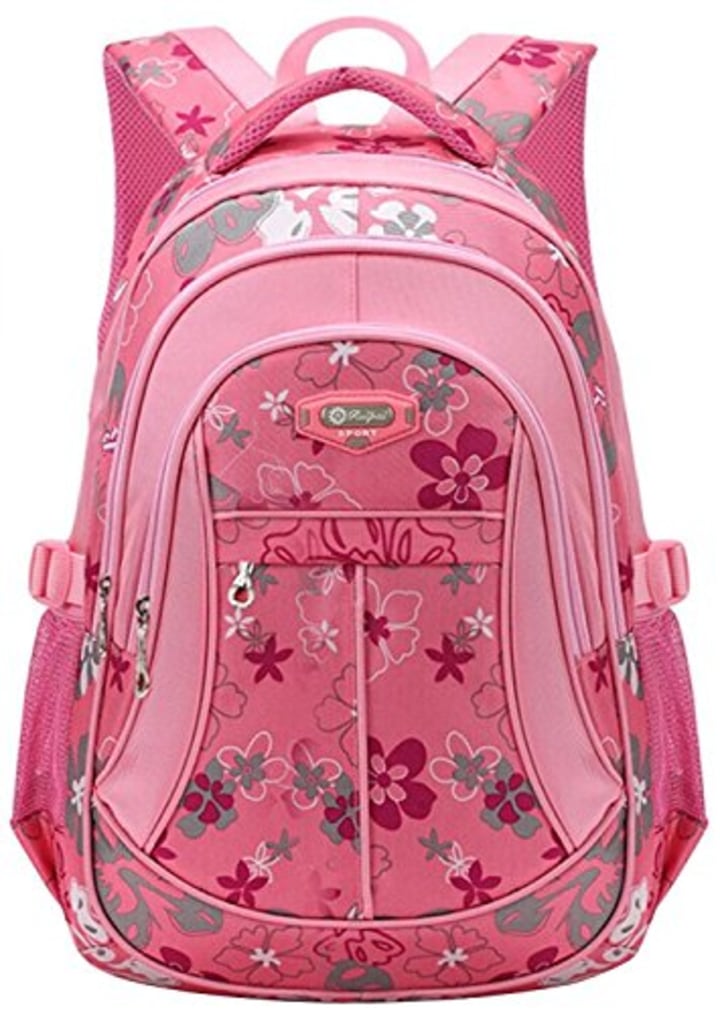Pens and pencils? Check. Notebooks? Check. The only thing left on your school supply list is the bag to carry all the items required to set your kid up for success this year.
But choosing a backpack takes much more consideration than simply picking the one with your kid’s favorite design or cartoon character. Karena Wu, physical therapist and owner of ActiveCare Physical Therapy in NYC and Mumbai, encourages parents to pay special attention to the construction and material used when selecting a backpack.
Not only are kids packing all those school supplies you stocked up on, “but when they get to school they are getting textbooks, and in this day and age, probably also getting tablets and e-readers,” says Wu. “The amount of stuff you put in the backpack, in addition to the amount of stuff the school is going to give to your kid, means a lot of weight.”
Your child should not carry more than 10-15 percent of their body weight in their backpack.
Her rule of thumb? Your child should not carry more than 10-15 percent of their body weight in their backpack. “We’ve all seen the postural change that happens when a kid is carrying more than this; their shoulders hunch and round as the weight pulls them down and backwards,” says Wu.
“The backpack is a necessary accessory for the whole school year, it has to be fashionable for the kid — and functional. It’s important to not have any necessary school item cause issues with your child’s body,” says Wu.
What to look for in a backpack
To prevent your child’s backpack (and the weight inside) from causing neck or back issues, here’s what to look for:
- Lots of compartments. The more pockets the better, so that you can put all the different items in different areas. “The single sack backpack is not the best because things get jostled around,” says Wu, adding that this concentrates all the weight in one section, versus dispersing it evenly among the backpack with different pockets. “Organize the pens, binders and notebooks in the backpack so that the load isn’t shifted to one side or the other,” she says.
- Thin, durable material. “The backpack should not add more weight to what you are already carrying,” says Wu. “No heavy materials and no thin materials because they can shred pretty quickly.”
- Padded back and straps. “Anything without a back pad isn’t great because if you have a pencil that gets lose or a book turns, that sharp corner can actually jab you in the back,” says Wu, adding that thin, flat straps, can also dig into your kid’s shoulders with the added weight. Look for ventilated padding (typically made from foam with a mesh overlay), which is aerated so that the backpack doesn’t get too hot on your child, says Wu. She also recommends contoured straps, which conform more comfortably to the child’s body.
- Chest and waist strap and buckle. “This keeps the bag centered on your torso, which helps disperse the load that the child is carrying down through their spine,” says Wu.
- Consider a rolling bag. If your child’s school allows it, a bag with a rolling feature can be a great way to help give your kid’s back a break from lugging around all that weight.
How to properly wear a backpack
Investing in the right backpack is only half the battle. How your kids use it also makes a difference. “Your kids might be complaining about the homework, but you definitely don’t want them complaining about any injuries,” says Wu. “So teach them good habits so they’re not compromising their health.”
- Wear both straps. While it may be “cool” to sling the backpack over one shoulder, teach your kids to utilize both straps. “When you use one strap it makes your shoulder shrug up and that can cause shoulder and neck issues. It can also make you stand on one side versus the another and in a developing child creates a side-bending moment in the spine, which isn’t ideal.”
- Keep the weight close to the body. Adjust the straps so that the backpack sits squarely on your child’s back and the weight is close to their torso. “Too heavy of a load too far from the body creates forward head-shoulder posture and a rounded spine that leads to neck, middle back and low-back issues, says Wu. “And the bad posture can actually impact other systems like breathing, gastrointestinal or stomach issues and even affect self confidence.”
- Set it down when standing. “If your child is standing for a prolonged period of time, teach them to put the backpack down to unload the spine.”
Backpacks that are safe for your back and neck
Ready to invest in a backpack that will keep your kid healthy all year long? We found some options that fit Wu’s criteria:
More on BETTER
Want more tips like these? NBC News BETTER is obsessed with finding easier, healthier and smarter ways to live. Sign up for our newsletter and follow us on Facebook, Twitter and Instagram.






















